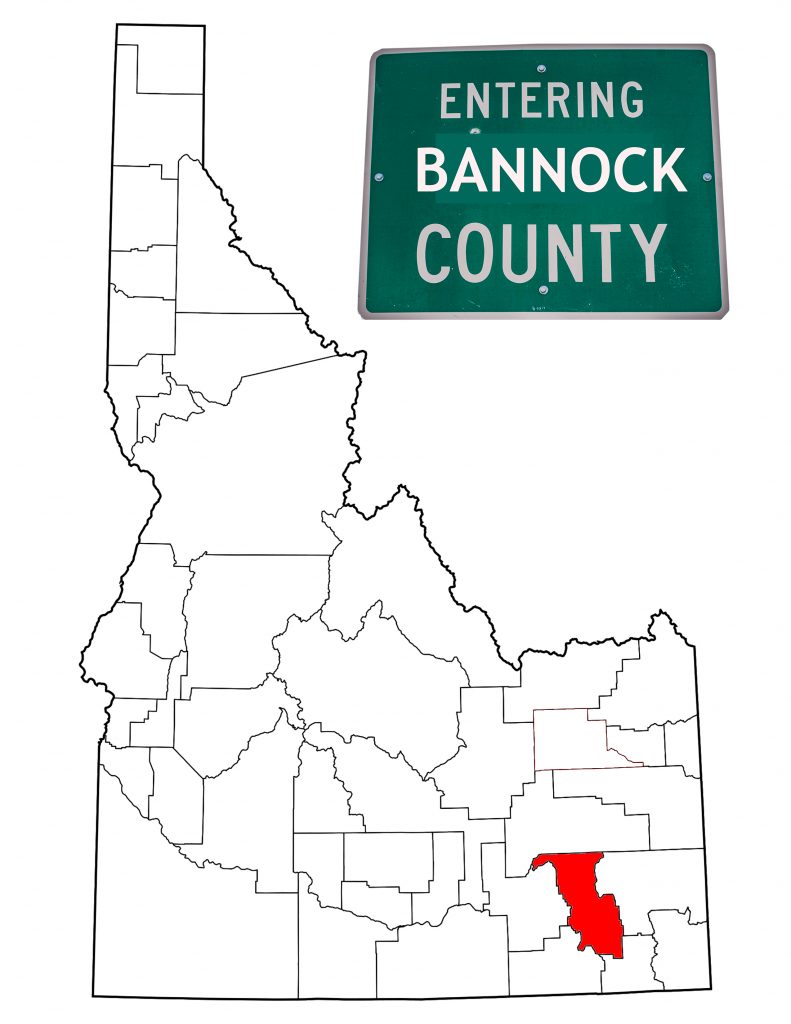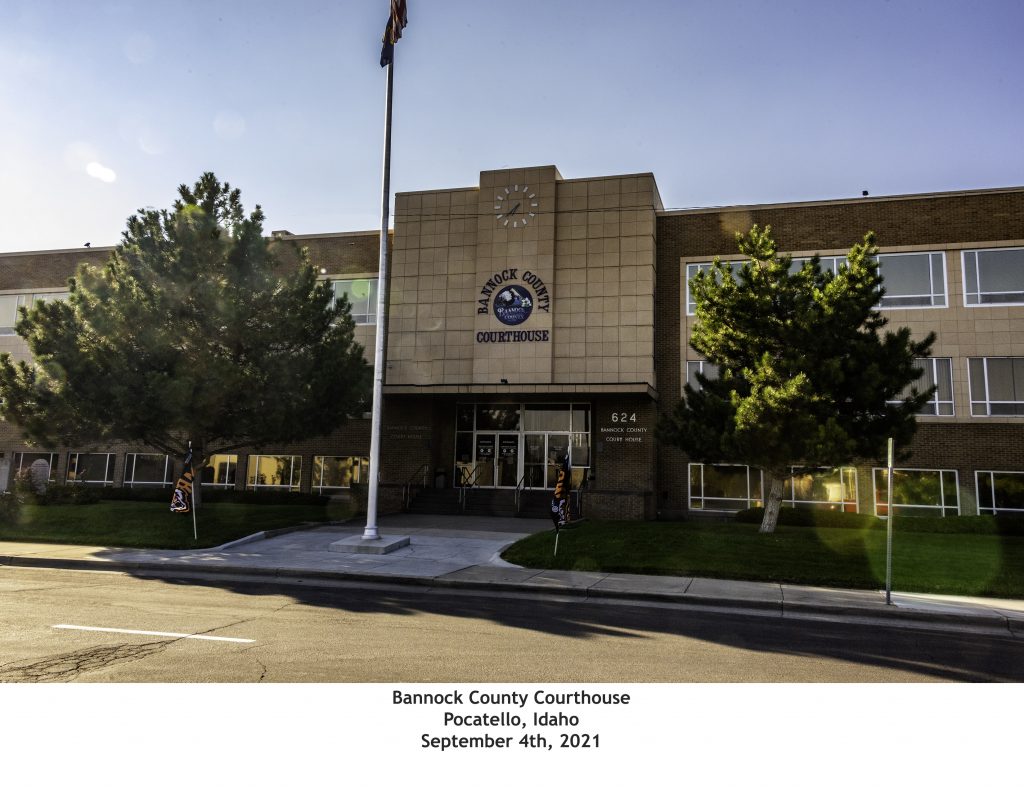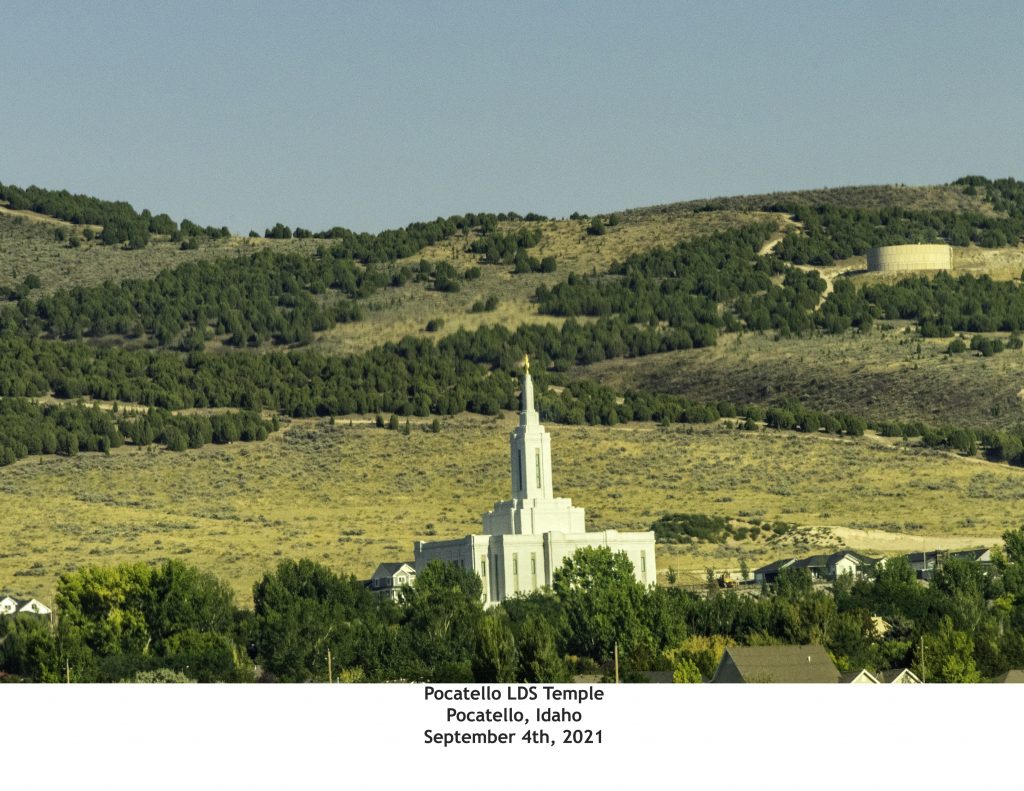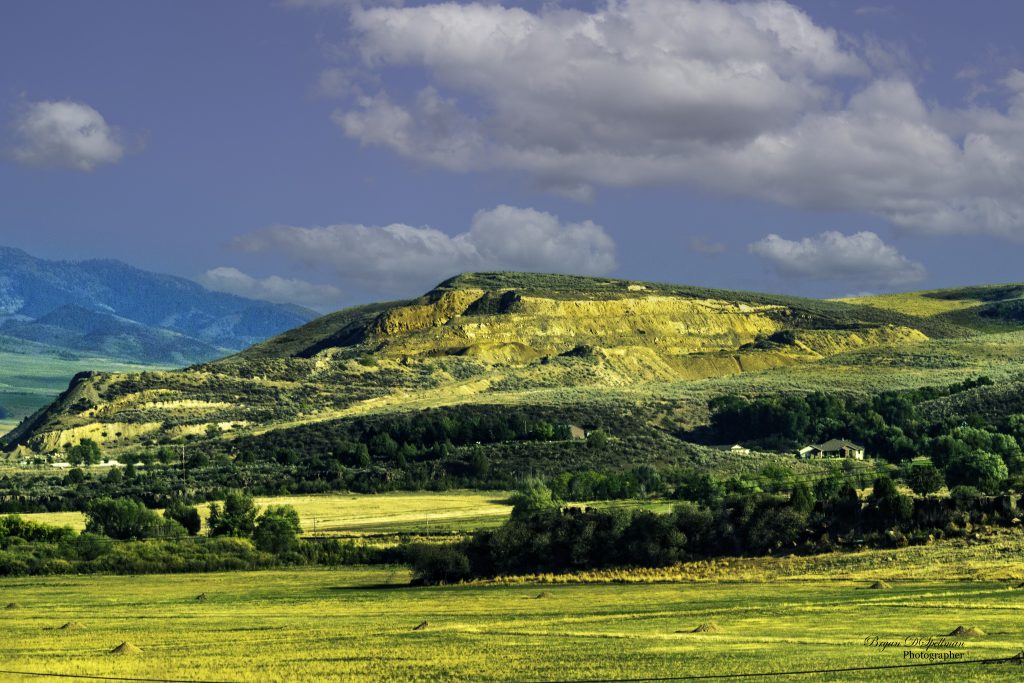Bannock County, Idaho

Introducing Bannock County
Bannock County lies near the southeastern corner of the state. It takes its name from the local Native American tribe and came into being in 1893. In that year, the state legislature separated it from Bingham County. It covers 1,147 total square miles of which 35 square miles are water. As of 2020, it had a population of 87,018, making it the sixth most populous Idaho county. Most of the county’s people live in Pocatello, the county seat and largest city, or in one of that city’s suburbs, Chubbuck and Tyhee. The northwestern corner of the county, where the Portneuf River flows into Snake’s American Falls Reservoir, is the lowest in elevation. The southern portion of the Fort Hall Indian Reservation lies within the boundaries of Bannock County.
History of Bannock County
The Bannock (Northern Paiute) and Shoshone people had lived in the area for hundreds of years when European civilization arrived. Trappers and explorers came through in the early 1800s. Stories of the riches made in the fur trade lured Capt. Nathanial Wyeth. He established the original Fort Hall in 1834. Wyeth found himself unable to compete with the Hudson Bay Company‘s prices and sold his holdings to the British in 1846. Fort Hall was an important stop along the Oregon Trail and served to draw settlers to the region. The railroad brought even more, and when the Union Pacific extended north into Idaho, Pocatello became a major railroad town.
Pocatello, the Bannock County Seat

Pocatello supposedly takes its name from the Shoshone chief who granted railway access across the Fort Hall Reservation. (Curiously, the Shoshone Chief did not call himself “Pocatello.” Indeed, the name means nothing and is unpronounceable in the Shoshone language. That language has no “l” sound.) The city, founded in 1889, grew rapidly as settlers followed gold and the railroad into the area. During the 1960s, Pocatello was Idaho’s most populous city. When Boise took that honor, Pocatello stayed in second place for almost thirty years. With a 2020 population of 56,282, the city is now sixth. Pocatello is home to Idaho State University and the Pocatello Women’s Correctional Center.
Pocatello’s downtown district exudes a nostalgic atmosphere, with its historic buildings and architectural landmarks. One prominent feature is the Union Pacific Depot, a magnificent structure that harkens back to the city’s railroad heritage. The depot now serves as a museum, showcasing exhibits that depict the significance of the railroad in shaping the region’s growth.
Education plays a crucial role in Pocatello, as it is home to Idaho State University (ISU). ISU is a leading educational institution renowned for its research in science, technology, engineering, and healthcare. The university’s influence extends beyond academics, as it serves as a cultural and intellectual hub for the community. The university’s Stephens Performing Arts Center hosts various concerts, plays, and performances, enriching the city’s artistic landscape.
Pocatello offers a range of recreational activities for residents and visitors alike. The city’s extensive park system includes Ross Park, which features a zoo, swimming pool, and recreational facilities. The nearby Bannock County Historical Museum preserves the region’s heritage through exhibits and artifacts that showcase the area’s pioneer history.

Chubbuck and Tyhee, Pocatello’s Suburbs
Chubbuck
Adjacent to Pocatello lies the city of Chubbuck, which has experienced rapid growth in recent years. Chubbuck seamlessly blends residential, commercial, and industrial developments while maintaining a close-knit community atmosphere.
Retail and dining options abound in Chubbuck, with popular shopping centers like the Pine Ridge Mall providing a variety of stores, restaurants, and entertainment venues. Residents enjoy the convenience of having amenities within close proximity, making Chubbuck an attractive place to live.
Chubbuck is also home to many beautiful and well-maintained city parks. These parks offer a peaceful retreat with walking trails, picnic areas, and sports facilities.
Tyhee
Located northwest of Pocatello, the unincorporated community of Tyhee captures the essence of rural living in Bannock County. Tyhee is nestled amidst rolling farmlands and offers a tranquil setting away from the bustling city.
Agriculture plays a significant role in Tyhee’s economy, with farms and ranches dotting the landscape. The community takes pride in its agricultural heritage, and residents often participate in local fairs and festivals celebrating rural traditions.
Nature enthusiasts are drawn to Tyhee’s serene surroundings, which provide ample opportunities for outdoor activities. The area’s open spaces and scenic beauty lend themselves to activities such as hiking, horseback riding, and wildlife watching. Tyhee is also close to the Portneuf Range, offering access to its rugged terrain and recreational opportunities.
The tight-knit community of Tyhee embraces a slower pace of life, fostering a strong sense of community spirit. Local gatherings, such as farmers’ markets and community events, bring neighbors together and celebrate the area’s rich agricultural heritage.
Other Bannock County Communities

Downey:
Situated in the southern part of Bannock County, the charming town of Downey holds a special place in the county’s history and culture. Downey embodies the spirit of the early pioneers who settled in the area, and its residents take pride in preserving their rich heritage.
Downey celebrates its pioneer history through events like the Downata Hot Springs Pioneer Day, which brings the community together to honor their ancestors and showcase traditional crafts, music, and activities. The town’s Main Street reflects its historic character, with well-preserved buildings that harken back to its early days.
Inkom:
Nestled at the base of the Portneuf Range, Inkom offers a picturesque setting with its scenic beauty and proximity to outdoor recreational areas. The town attracts outdoor enthusiasts seeking adventure in the nearby mountains and forests. Inkom Creek, which runs through the town, provides opportunities for fishing and water-based activities.
McCammon:
McCammon, located at the foot of the Portneuf Range, boasts a scenic location that captivates residents and visitors alike. The town’s picturesque setting and close proximity to outdoor recreational areas make it a popular destination for nature enthusiasts.
The Portneuf River, which flows through McCammon, offers excellent fishing opportunities, particularly for trout. Outdoor recreationists can explore the surrounding mountains and forests through hiking and mountain biking trails that showcase breathtaking vistas and wildlife viewing.
Lava Hot Springs:
Renowned for its geothermal wonders, Lava Hot Springs is a unique destination within Bannock County. The town’s natural hot springs, enriched with mineral properties, have long been revered for their therapeutic benefits and relaxing ambiance.
Lava Hot Springs is home to several hot springs resorts that offer a range of pools, slides, and water attractions. Visitors can soak in the healing waters, unwind in the saunas, or enjoy thrilling water slides, making it a perfect place for relaxation and family-friendly fun.
The town also hosts various events throughout the year, including the Lava Hot Springs Folk Festival, which celebrates the region’s musical heritage with live performances and workshops. Additionally, Lava Hot Springs boasts a vibrant downtown area with unique shops, restaurants, and art galleries.
Portneuf:
Nestled in the scenic Portneuf Valley, the unincorporated community of Portneuf offers a tranquil setting characterized by rolling hills, farmland, and picturesque vistas. The town derives its name from the nearby Portneuf River, which meanders through the valley.
Portneuf is an agricultural community, with farming and ranching playing a significant role in its economy. The fertile soil of the Portneuf Valley supports a variety of crops, including grains, potatoes, and alfalfa. The community celebrates its agricultural heritage through local fairs, farmers’ markets, and festivals.
Arimo:
Nestled in the southeastern part of Bannock County, the town of Arimo captures the essence of rural beauty and small-town charm. Surrounded by rolling hills and agricultural landscapes, Arimo offers a tranquil retreat for residents and visitors seeking a peaceful escape. Arimo’s history dates back to the late 19th century when Mormon pioneers settled in the area. The town was named after Arimo V. Evans, a prominent community leader who played a crucial role in its early development.
Virginia:

Situated in southern Bannock County, the unincorporated community of Virginia lies in the scenic Marsh Valley. Surrounded by lush farmlands and framed by the majestic mountains, Virginia offers a serene and idyllic retreat. The Marsh Valley School District, located in Virginia, serves as an educational and social center for the community. The school district’s facilities and athletic programs provide opportunities for students and community members to come together and foster a sense of pride and unity.
Conclusion:
Bannock County’s cities and towns, including Downey, Inkom, McCammon, Lava Hot Springs, Portneuf, and Arimo, contribute to the county’s rich tapestry of history, culture, and natural beauty. Each town holds a unique character and charm, showcasing the diverse aspects of rural and small-town living. From pioneer celebrations to outdoor recreational opportunities, these communities offer a haven for residents and visitors seeking a blend of heritage, tranquility, and warm hospitality in the heart of Idaho.
Topography:
Bannock County boasts a diverse topography that captures the essence of Idaho’s natural beauty. The region is characterized by rolling hills, expansive plains, and majestic mountain ranges. The eastern portion of the county is dominated by the Portneuf Range, part of the larger Rocky Mountains. Here, peaks such as Bonneville Peak, Snow Peak and Haystack Mountain rise above 9,000 feet and offer breathtaking vistas and opportunities for outdoor exploration.

Within Bannock County lies the Fort Hall Indian Reservation, encompassing over 500,000 acres of diverse terrain. This reservation includes parts of the Snake River Plain, the foothills of the Portneuf Range, and the picturesque Fort Hall Bottoms. The reservation’s natural beauty is complemented by its cultural significance, with sites like the Shoshone-Bannock Tribal Museum preserving the heritage and traditions of the Native American tribes.
Transportation
Bannock County’s transportation network ensures easy accessibility and connectivity within and beyond its borders. The region is traversed by two interstate highways, Interstate 15 and Interstate 86, facilitating efficient travel to neighboring cities and states. In addition, US Highways 30 and 91 cross through the county. The Union Pacific Railroad, which played a pivotal role in the county’s development, still maintains an active presence, supporting freight transportation and fostering economic growth.
Pocatello Regional Airport provides air travel options, connecting the county to domestic and international destinations. The airport serves as an essential transportation hub, supporting both commercial and general aviation activities. Additionally, the city’s robust public transportation system, managed by Pocatello Regional Transit, ensures convenient mobility for residents and visitors alike.
Recreational Opportunities
Bannock County is a haven for outdoor enthusiasts, offering a plethora of recreational areas that highlight the region’s natural splendor. The Caribou-Targhee National Forest, spanning the eastern and southern portion of the county, beckons adventurers with its sprawling wilderness, pristine lakes, and abundant wildlife. Hiking, camping, fishing, and hunting opportunities abound, providing a gateway to immerse oneself in the tranquility of nature.
Moreover, the Portneuf Range in the eastern part of the county is a paradise for outdoor recreation. Pebble Creek Ski Area, with its challenging terrain and breathtaking views, is a popular destination for winter sports enthusiasts.
The county’s rivers and reservoirs, such as the Snake River and American Falls Reservoir, offer opportunities for boating, fishing, and water sports. Lava Hot Springs, in addition to its hot springs, boasts a water park and year-round swimming opportunities. These recreational areas provide a refreshing escape from the bustling city life and allow visitors to connect with Idaho’s natural wonders.
Conclusion
Bannock County, Idaho, weaves together a vibrant tapestry of history, topography, cities and towns, transportation, and recreational areas. From its Native American origins to the bustling city of Pocatello, the county embraces its diverse heritage and offers a plethora of experiences for residents and visitors alike. With its captivating landscapes, well-connected transportation networks, and abundant outdoor recreational opportunities, Bannock County stands as a testament to the allure and vitality of southeastern Idaho. For more stories of Idaho’s forty-four counties, go to my Gem State page and click on any county’s link. Just remember, this is a work in progress. New county pages will be added on a regular basis.
![]()
